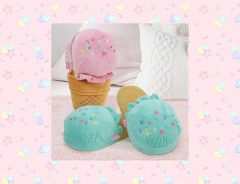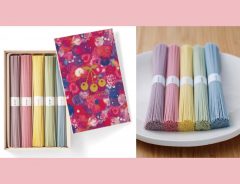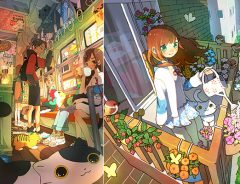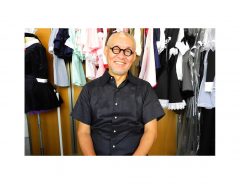- Tags:
- capsule toy / Kawaii / Noh mask / Tama Kyu
Related Article
-

Relive Japan’s outrageous gyaru style with these capsule toys
-

Be sweet to your feet with these comfy and kawaii ice cream cone slippers
-

The Bear Paw Café: A Kawaii Way of Employing People With Mental Health Issues
-

Kawaii Sōmen noodles in colorful box with art by Sebastian Masuda, Japan’s “Father of Kawaii”
-

Happy Cats, Coffee Shops and Carefree Times in TAO’s Cheerful and Nostalgic Illustrations
-

Interview with Masaaki Shiozawa: The “Founding Father” of Maid Clothes



The traditional Japanese theater performance of Noh is symbolized by the cypress wood masks worn by its practitioners. Although nearly 60 different Noh mask types exist, representing humans, animals, monsters, supernatural beings and deities young, old, male and female, it is often the standard female mask, lacquered and painted white with red lips and thick brows, which is used universally in media and popular culture as the representative of the art.
While the performance of Noh continues to this day in its traditional form, Noh masks have also found their way in popular culture. Cheap replicas can be purchased for use as costumes, or sometimes even for use in strange "performance art," as we saw with these Noh masks attached to circulating fans. But perhaps one of the clearest signs that Noh masks have crossed over into popular culture is the manga "Noh Masked High School Girl Hanako," whose protagonist is concerned with fashion, and loves cute things in spite of wearing a Noh mask at all times.
Kawaii Noh mask capsule toys by Tama-kyu
Perhaps in a similar spirit, capsule toy maker Tama-kyu, known for oddball series such as these public drunk figurines, have released a lineup of five "kawaii" Noh masks expressing nostalgia for the 1990s and the sensibilities of the Reiwa Era. There's even a pandemic-ready version: a Noh mask wearing a face mask.
© PR Times, Inc.
Let's take a look at the five types:
Natural look makeup
© PR Times, Inc.
Ganguro*
© PR Times, Inc.
* Ganguro is a fashion trend popular among some Japanese women in the mid-1990s, and characterized by dark tans and contrasting makeup.
Rabbit
© PR Times, Inc.
Visual kei*
© PR Times, Inc.
* Visual kei is a music and fashion movement among Japanese musicians which arose in the late 1980s and early 1990s, visually characterized by heavy makeup and flamboyant clothing. It's similar to Western glam aesthetics.
Face mask
© PR Times, Inc.
Each mask comes with an elastic strap so you can attach them to different things.
© PR Times, Inc.
© PR Times, Inc.
These kawaii Noh masks cost 200 JPY apiece and are available from capsule toy dispensers nationwide.
For more information, see the product page on Tama-kyu's website here.